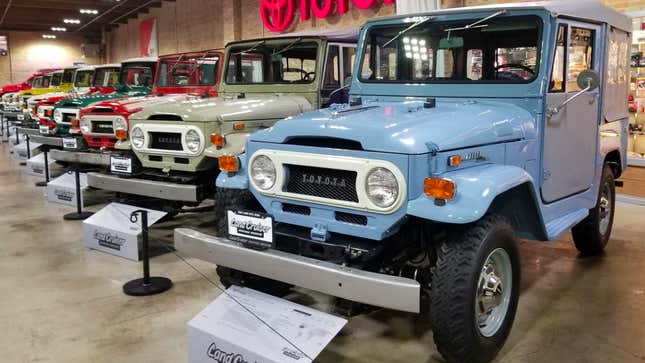
Last week, I visited the Land Cruiser Heritage Museum in Salt Lake City, Utah, and found myself fascinated by machines that share quite a bit in common with old-school Jeeps that I regularly lust after. But what I found more interesting than the commonalities were the differences. So let’s look at some hardware found under one of the most legendary 4x4 nameplates in history, the Toyota Land Cruiser.
As should be clear by now, I’m quite well-versed when it comes to old Jeeps. And though I’d say I’ve got a pretty good handle of off-road vehicles in general, I’ll admit that Toyota Land Cruiser knowledge is not my strong suit, which is why my visit to the Land Cruiser Heritage Museum was so enlightening.
Here’s just a taste of the hardware that I found interesting during my far-too-short visit to the museum. We’ll start with the cantilevered transmission and transfer case.

Oh yes, you read that right: cantilevered transmission and transfer case. You see, on pretty much every Jeep ever built, the engine is connected to the chassis via two motor mounts, and the transmission (which is connected to the transfer case) hangs off of that engine, and is held up by a crossmember somewhere in the middle of the vehicle. There’s a rubber transmission mount between the crossmember and the transmission and (in some cases) the transfer case.
It makes perfect sense; These are some heavy gearboxes, and they can’t just hang off the back of the engine. Well, at least, that’s what I thought.
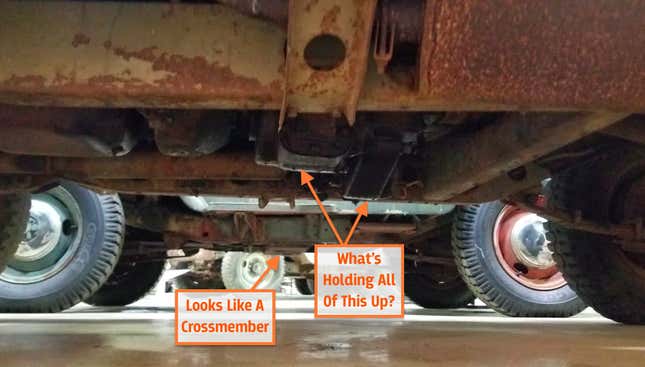
I took a look under the extremely rare 1953 BJT Toyota “Jeep” shown above, and was baffled by the setup. What’s holding all of this hardware up? In the background of the photo, you’ll see the first Toyota Land Cruiser ever sold in the U.S., a 1958 Toyota FJ25L. That vehicle, if you look closely, does appear to have a skid plate bolted to each frame rail, and that skid plate does appear to hold up the transmission and transfer case. So perhaps the BJT, of which only a few hundred were ever made, was a one-off with this odd setup?
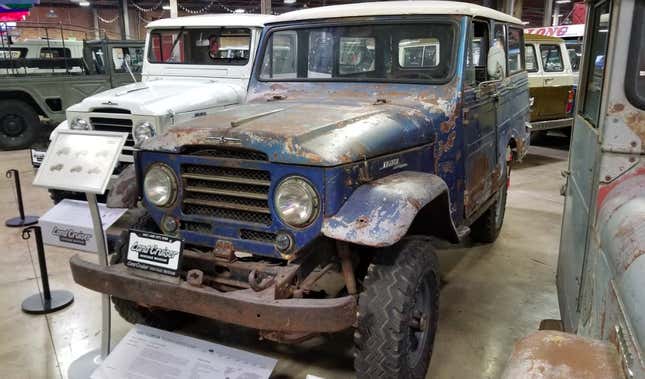
Turns out, that’s not the case. Even an old Toyota FJ28L was set up the same way (it’s the white one in the background of the photo above, though the blue one is basically the same).
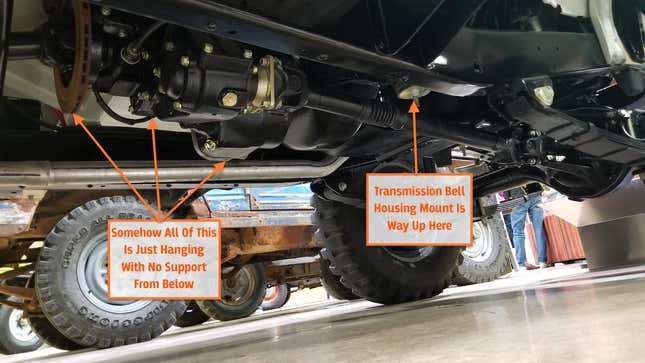
And the even more modern, light blue 1971 Toyota FJ40 below also has a couple of cantilevered gearboxes lurking below:
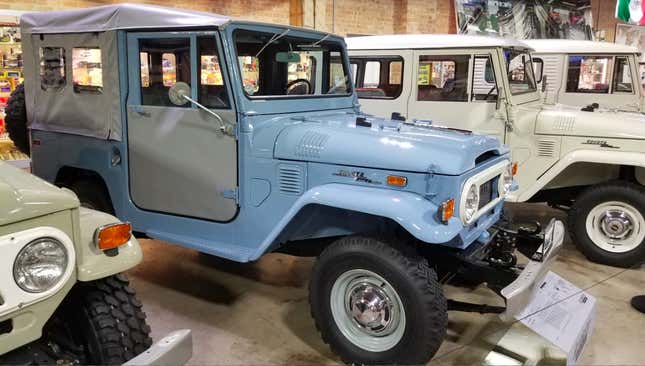
Behold:
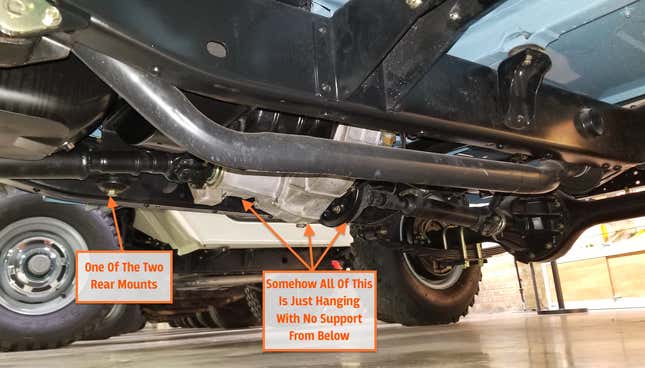
The rearmost frame mounts that support everything appear to attach to the bell housing (here’s an image of the bare chassis that shows this clearly). Those mounts, which are pretty far towards the front of the vehicle, along with the engine mounts are all that are holding the engine/trans/transfer case in place, as far as I understand. That means there’s quite a bit of cantilevered weight, there. Here’s a closer look at one of the rearmost mounts that connects to the bell housing, this time under a 1977 FJ40 Land Cruiser:

For comparison, here’s how my Willys CJ-2A, and pretty much all flatfender Jeeps, are set up. There’s a crossmember holding the heavy trans and T-case from underneath:
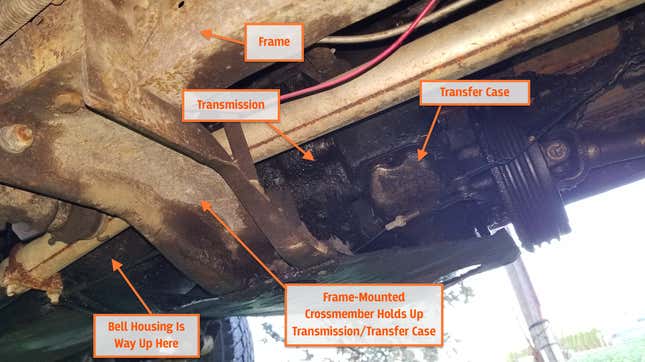
Another cool thing I noticed is that FJs kept a hinge at the bottom of their grilles for many decades. My understanding is that removing just a couple of bolts on each side of the grille allows for it to be folded down, and the slot in the hinge allows you to remove the entire grille once it’s rotated to the right position. Check it out:
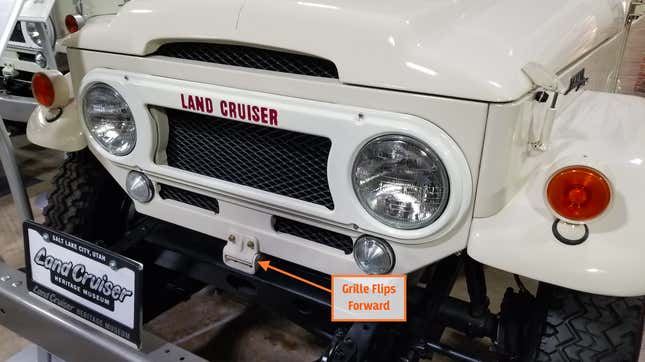
This is something I’ve ever only seen in a few Jeeps ever (the M38 and M38A1 military Jeeps come to mind), and it’s just an awesome feature making it easier to service the front of the engine. Plus, I bet it—along with the lack of a crossmember—would make removing the engine/transmission/transfer case as a single assembly quite easy.
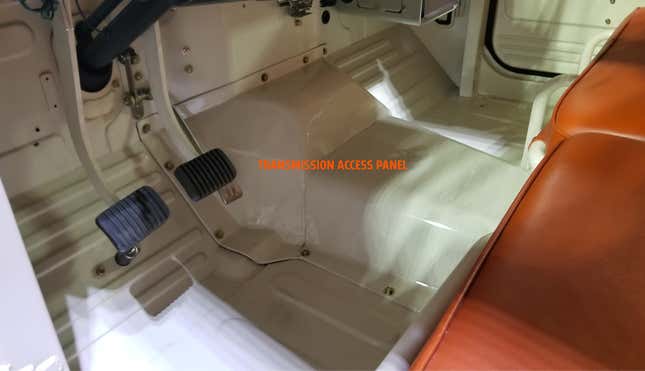
Speaking of service, the FJ has an enormous access panel just above the transmission. The FJ shown above is a column-shift model, but even floor-shift FJs have a big sheetmetal cover that you can remove by simply undoing a bunch of bolts, allowing access to the transmission from above. That’s just awesome.
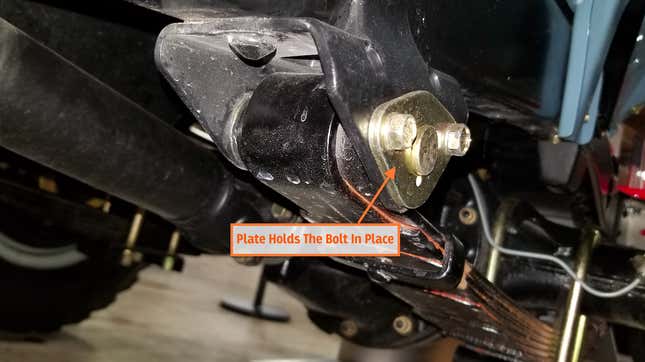
Another serviceability-related consideration that I noted were little plates on the leaf spring mounting brackets on the frame. Those plates, per experts at the museum, are there to hold the leaf spring eye bolt in place while you tighten the nut from the inside. To be honest, I’m not sure I understand the advantages of this setup over simply having a bolt head on one end and a nut on the other, but perhaps someone can enlighten me. Here’s a closer look, per a website that sells the thing, coolcruisers.com.
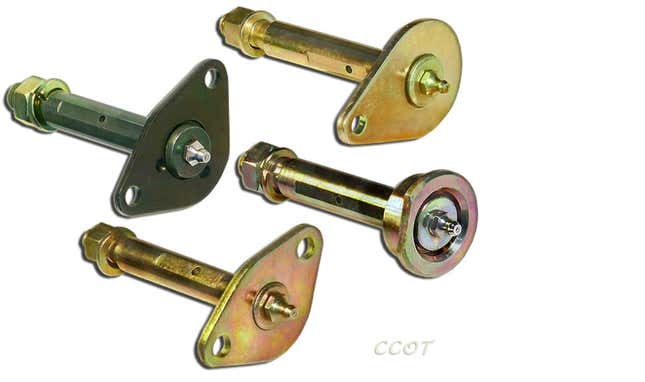
But oh, there’s more. Much more.
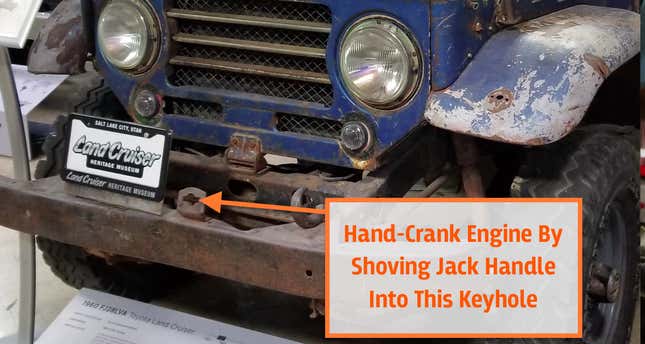
Let’s just say, for example, your starter motor crapped out on you, and you don’t have a replacement. Or, perhaps your battery has died. No problem, just grab your jack handle, shove it through the Chevy Bowtie-shaped hole in the bracket on the front bumper, continue sliding it through the hole in the crossmember supporting the grille, and plug it into the crankshaft nut, which has a very strange shape to it. Here’s a look at a Land Cruiser FJ40 crankshaft nut that you can buy on eBay:
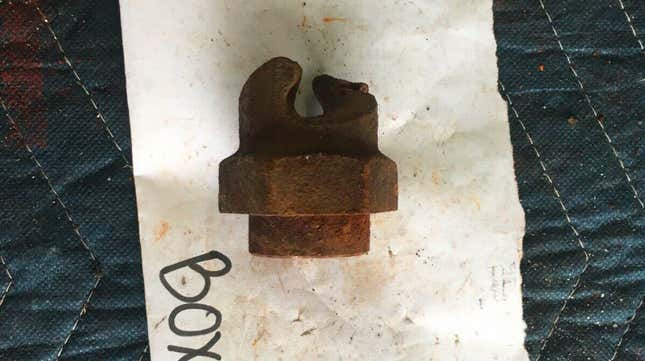
From there, you just crank that handle and hope the thing doesn’t backfire. Watch how it’s done:
There’s so much more about the FJ40 that fascinates me. For example, the window on the hardtop model has a very simple manual actuation that involves simply pulling the whole thing straight up and down. But more interesting than that, I think, is the four-wheel drive actuation. Here’s a look at both:
The setup is simple; there’s a cotter pin connected to a chain, and shoved through a bracket that holds the transfer case lever in place. Take the cotter pin out, and yank the lever, and you’re in four-wheel drive low range.
To the left of the lever is a knob that actuates the vacuum disconnect for the front axle. With the transfer case lever pushed forward and the knob pushed in, the front axle does not receive power, and the vehicle is in two-wheel drive. But yank the knob, and you’re in four-wheel drive high range. Then yank the lever, and you’re in four-wheel drive low-range. Or, if you want to go straight to low-range from two-wheel drive, yank the lever back as I mentioned in the previous paragraph, and it will pull the knob, actuating the front axle.
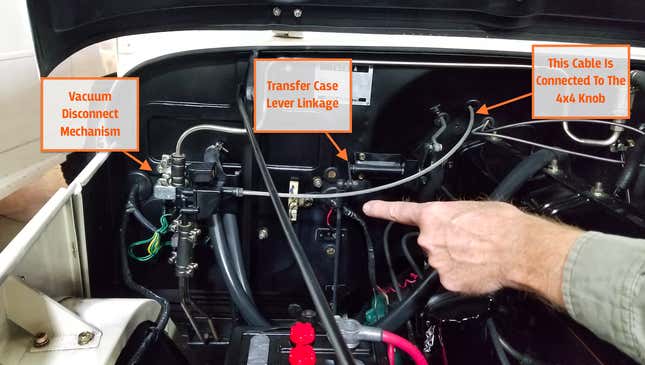
The image below shows how that vacuum disconnect mechanism (I’m sure there’s a different name that Land Cruiser fans use; I’m clearly not well-versed in Land Cruiser terminology) receives its vacuum from the intake manifold:
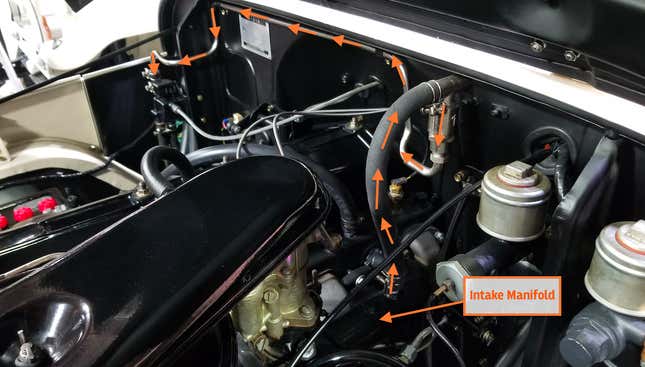
Underneath the vehicle, you can see where the the two vacuum lines coming off the underhood vacuum disconnect mechanism enter a big round, presumably diaphragm-containing housing to activate the front axle:
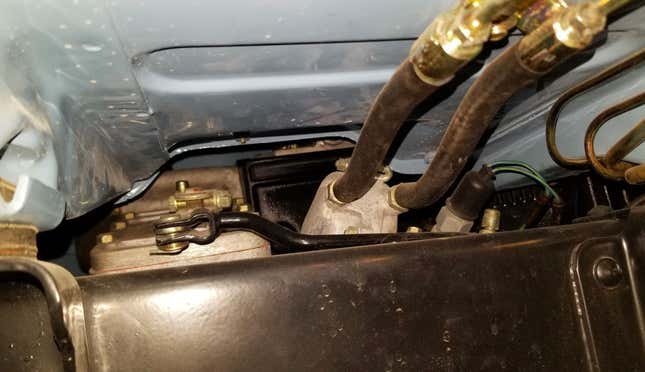
The setup is not that different than what was found in some Jeep Cherokees and Wranglers in the 1980s and 1990s, but apparently the front axle-disconnect system on the Land Cruisers wasn’t as unreliable as that of the Jeeps. Who’d have guessed?
Then there’s this amazing foot heater in the back of a 1977 FJ40 that I drove. It’s just a hexagonal shape on top of a cylindrical set of fins and tubes.
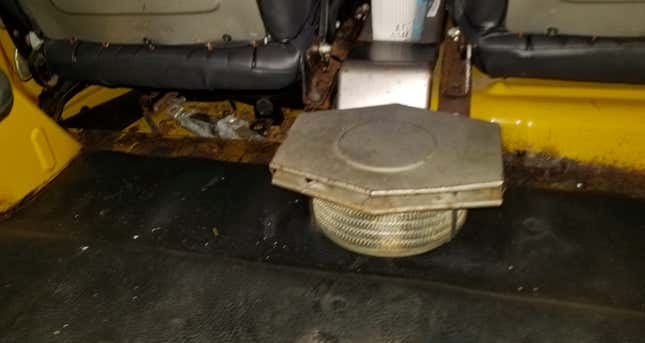
There’s one for sale on eBay, and the listing’s image gives a nice, up-close look at this amazing contraption. Check out the coolant ports on the left side:
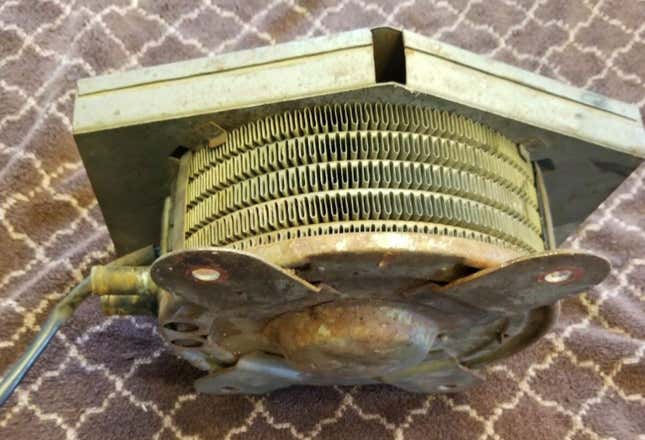
Then there’s one of the things the FJ’s features that I think is clearly superior to that of Willys Jeeps, and that’s the seating configuration. For one, the Land Cruiser could be had with a front bench seat, which is more than can be said about even the early column-shift Willys CJ-2As:
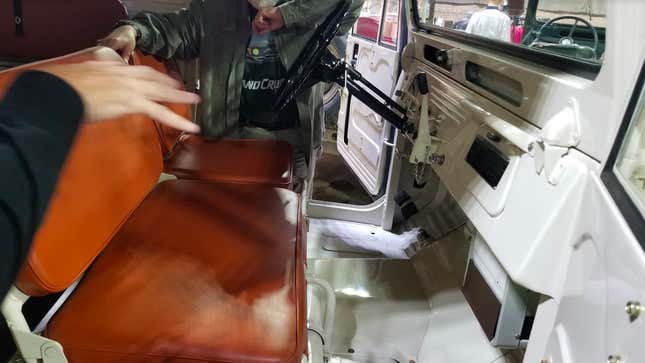
That means three people can sit up front. Out back, the Land Cruiser actually makes use of the high wheel wells, by placing benches on top of them. With two sitting on each wheel well, that’s four passengers in the back, and three people up front. This little FJ can seat seven! That’s incredible, especially considering Willys Jeeps were only set up to seat four.
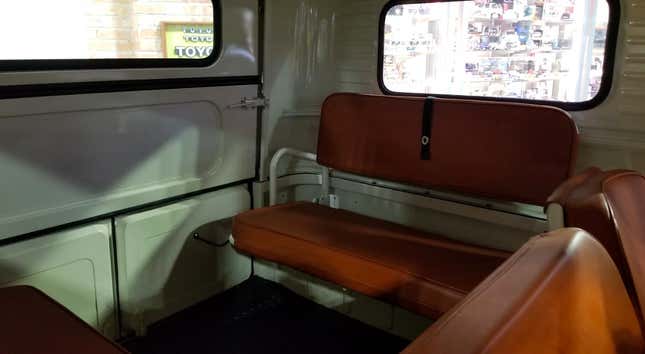
Enough about old FJs, though, because there was a Toyota Mega Cruiser at the museum!
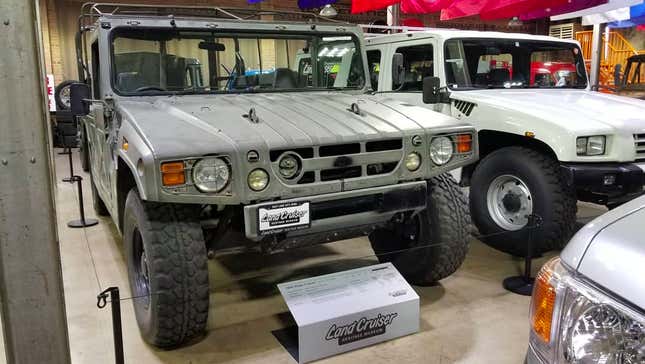
The Mega Cruiser, which came out in 1995, was meant for use in military applications, though as you can see on the right in the photo above, a few civilian versions did exist. These machines, Toyota’s largest 4x4s according to the Land Cruiser Heritage Museum, were genuinely fascinating; just one look underneath makes that clear:
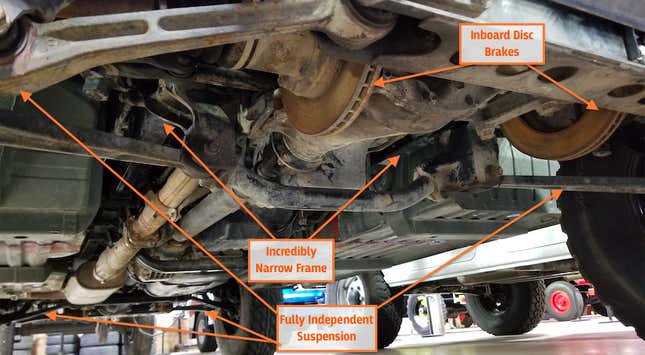
My first look under there had me thinking this thing had a unibody construction, but after sliding farther underneath, I discovered that the frame rails sat really far inboard. Other interesting things to mention are the control arms for the fully independent suspension, as well as the inboard brakes. Typical off-roaders from the time tended to have at least one solid axle, and brakes were, of course, outboard of the knuckle.
Taking the space of where traditional brakes would be are portal axle gearboxes, which help give this thing some pretty nice ground clearance, which is good, because the underbody protection was unimpressive:
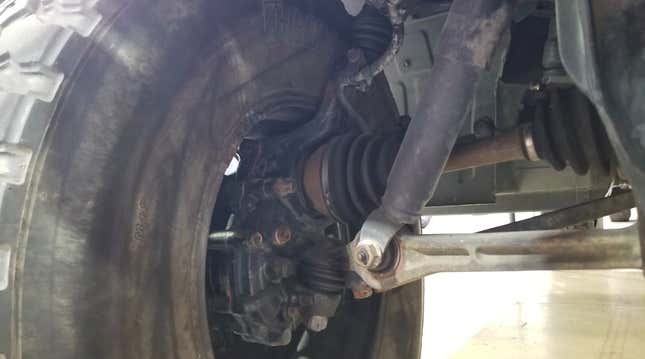
I could go on and on about the Mega Cruiser’s sweet tech, but instead, I’ll suggest that you watch the video below from Chris O’Neil, a car journalist who runs the coolest Instagram page, mountainwestcarspotter, and whom I consider the foremost authority on all things Land Cruiser:
Another fun thing at the museum was this HZJ79 mine truck that came from Canada, and that—despite being less than 10 years old—looks like it’s been through hell and back:
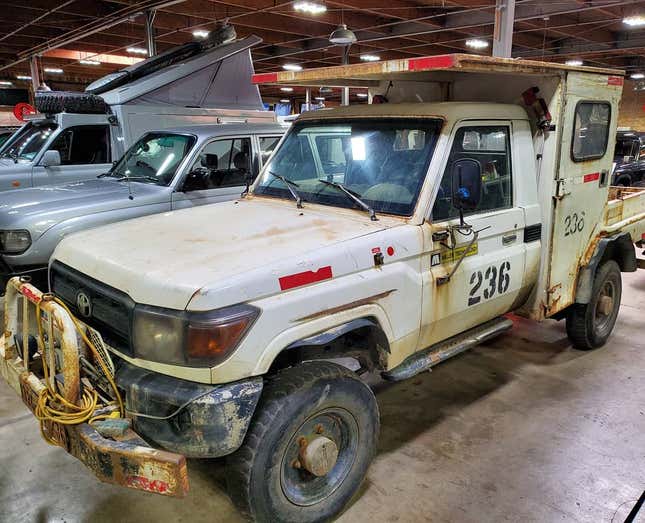
Probably the interesting bit of tech on the truck are the axles, which look unlike any solid axle I’ve ever seen. According to the tour guide, they use hydraulic brakes incorporated into the housing. Based on a quick glance at Dana’s website, these likely have inboard wet disc brakes and a hydraulic-release parking brake. All I know is, they look extremely heavy-duty:
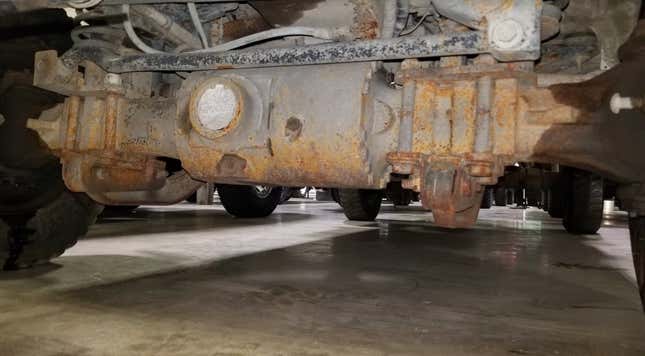
There’s more to come from my visit to Utah, as I also had a chance to drive a bunch of Land Cruisers. Until then, hopefully the mechanical intricacies shown above—especially that hand crank, the rear foot heater, and the cantilevered transmissions—will satiate your appetite for Land Cruiser goodness.